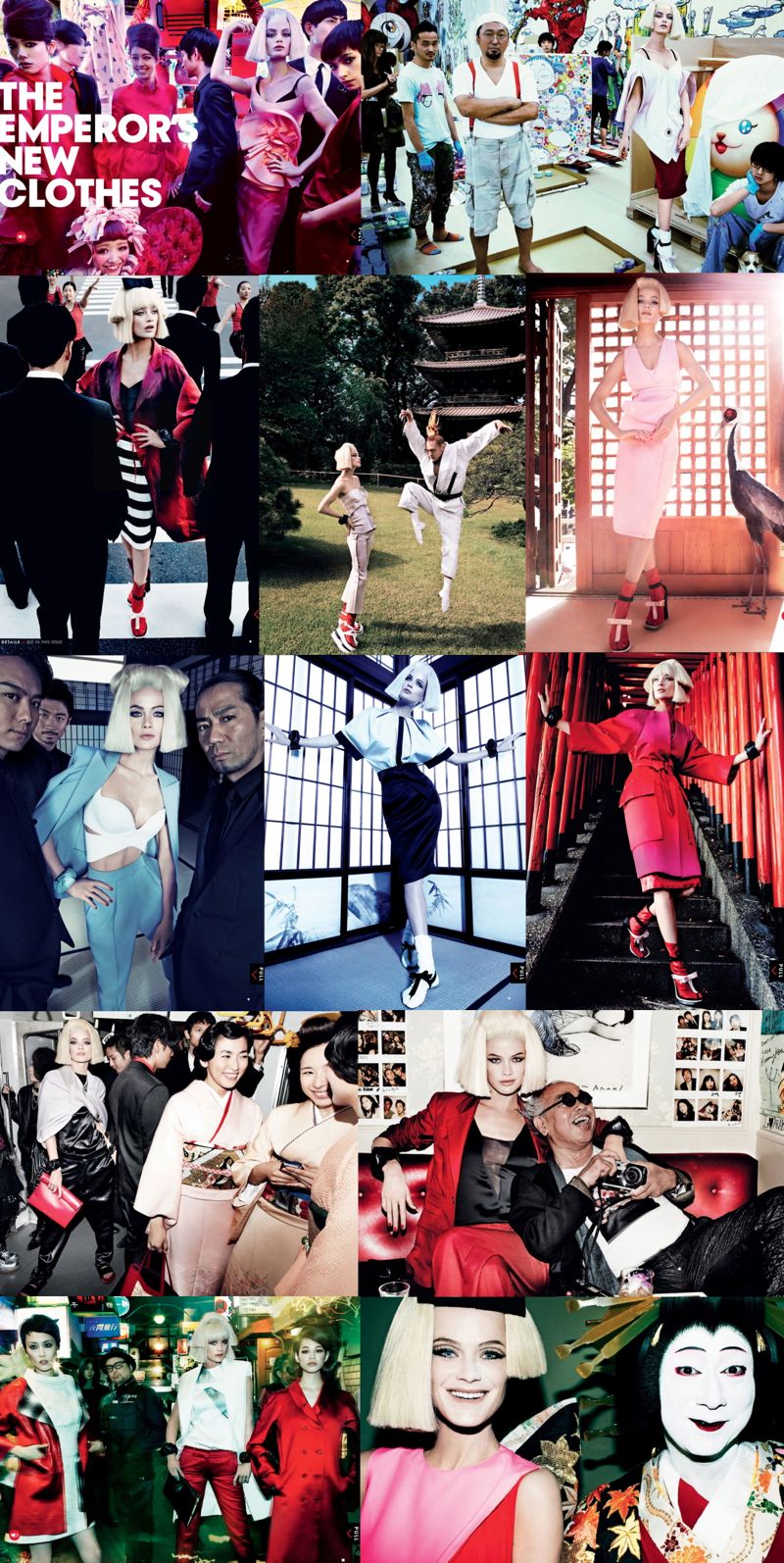トレンド傾向!昨年9月に開催された2013年春夏ミラノ・コレクション2日目。話題となったプラダ2013年春夏コレクション。女性らしい花モチーフのドレスに、日本を想わせる折り紙のように折り重なった日本風ドレス。足元はリボンの付いたカラフルな厚底下駄とでも言わせて頂こう(この靴も話題に)。そう、西洋はかつて様々な日本の分野からインスピレーションを得ては東洋に合図していた。2011年12月、ミウッチャ・プラダの姿はなかったものの新砂の倉庫街でプラダ2012年春夏メンズ&レディスコレクション「PRADA 東京 2012 春夏」が(コチラ)発表された。そして、2013年春夏コレクションではエミリオ・プッチにジャンポール・ゴルチエ、ガレス・ピューらが日本要素を取り入れたコレクションを発表。
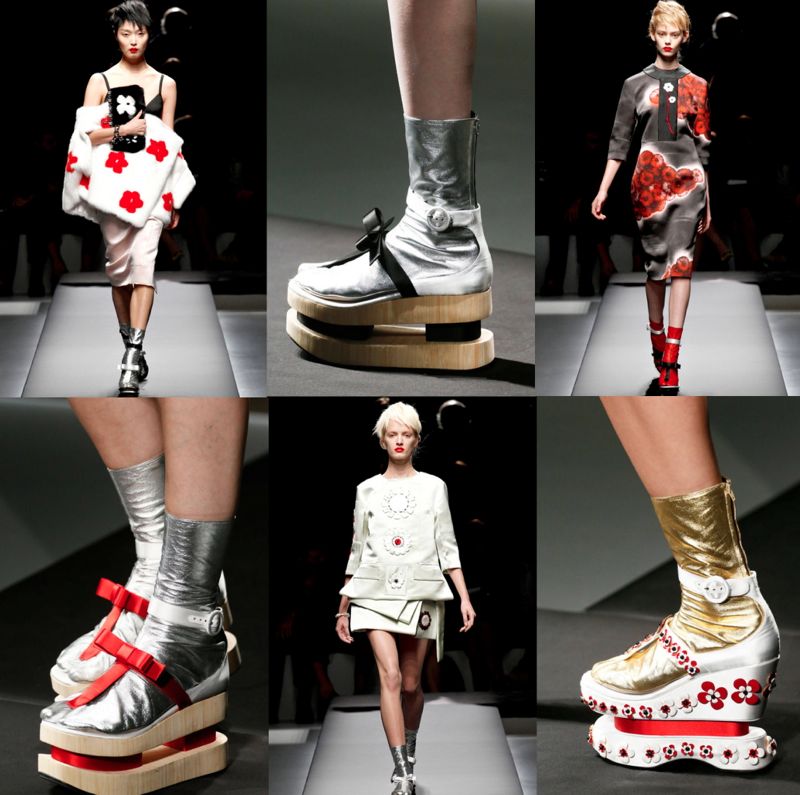 PRADA Spring/Summer 2013 Collection
PRADA Spring/Summer 2013 Collection
Japan is everywhere this season. It began, as trends often do, with PRADA’s show in Milan. Origami folds, pop-anime flowers and art-piece-platform shoes (that became the talking point of the season) signalled that the West was once looking East to inspiration from Japan. Muccia Prada herself didn’t make it over for the huge event PRADA held in Tokyo at the end of 2011 (photos here) but Japan was clearly on her and other designers minds. Japanese references followed in the shows for Emilio Pucci, Jean-Paul Gaultier and Gareth Pugh to name just a few.
グッチのクリエイティブ・ディレクター、フリーダ・ジャンニーニは、日本人漫画家、荒木飛呂彦とのコラボレーションで全世界のウィンドウデザインを展開している。また、昨年カール・ラガーフェルドが東京に来日した時のことを覚えているかな?ショー(シャネル 2013年春夏プレタポルテコレクション)では日本の要素は見られなかったものの、キャンペーンは日本そのもの。畳の上でポーズを取る3人のモデル。生け花に布団と、古き良き日本の伝統を演出(下記写真)。
GUCCI tapped manga artist Hirohiko Araki to illustrate their Resort 2013 collection which appeared in stores worldwide earlier this year, the second time the two have collaborated. Karl Lagerfeld, obviously feeling inspired from his trip here last year infused CHANEL’s Spring 2013 campaign with Japanese elements such as tatami mats, ikebana, shoji screens and futons despite the lack of any real Japanese references in the collection itself.
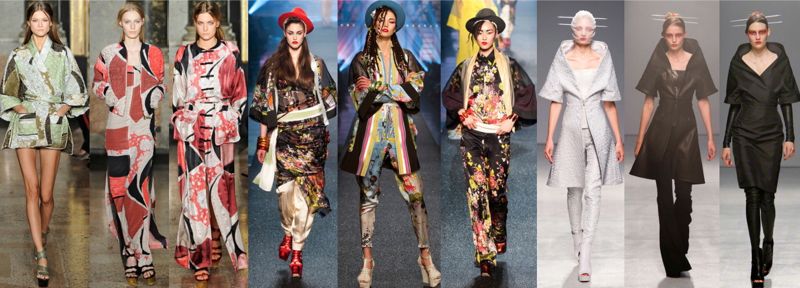 Spring/Summer 2013 COLLECTION’S from Emilio Pucci, Jean-Paul Gaultier and Gareth Pugh
Spring/Summer 2013 COLLECTION’S from Emilio Pucci, Jean-Paul Gaultier and Gareth Pugh
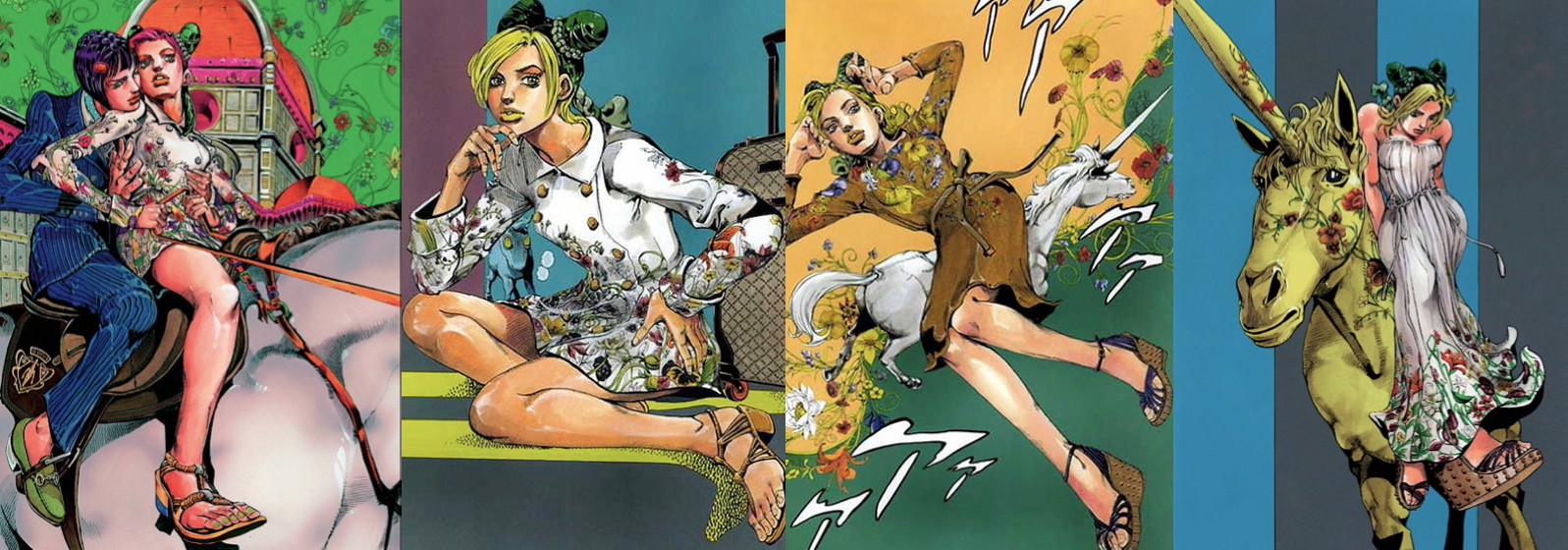 GUCCI RESORT 2013 Manga by Hirohiko Araki
GUCCI RESORT 2013 Manga by Hirohiko Araki
トレンドには興味ない!といったら嘘になるが、そこまで気にはしていない。US版VOGUEの撮影でマリオ・テスティーノが東京に訪れていた時のこと。やはりテスティーノが東京で撮影をしていると聞くと気になるのは確か。世界のトレンド発信源といっても過言ではないUS版VOGUE(これらの”コト”に従う人々)。アメリカから発信されるグローバルトレンド。東京(日本)ストーリー「The Emperor’s New Clothes」のためVOGUEクリエイティブチームは訪れた。キャロリン・マーフィーをメインモデルに、水原希子(女優・モデル)、太田莉菜(モデル)、森泉(モデル・タレント)、森星(モデル)、荒木経惟(写真家)、中村福助(歌舞伎役者)、村上隆(アーティスト)、EXILE(ダンス・ボーカルユニット)、菊地凛子(女優)らが登場(東京ストーリーは、3月号US版VOGUEに掲載されている)。撮影場所はアラーキーの行きつけのバー、村上隆のスタジオ、新宿ゴールデン街、電車の中、障子に囲まれた畳部屋などと”ザ・ニッポン”。衣装はセリーヌ、プラダ、ラルフ・ローレン、ディオール。(個人的には日本人デザイナーズブランドも取り入れてほしかったかな。)
We’re not usually interested in trends but when Testino is in Tokyo to shoot for VOGUE we pay attention. US VOGUE is the global barometer of seasonal fashion (for people who follow these things) and their March issue features a huge editorial shot in Tokyo. Model Carolyn Murphy poses alongside Rina Ohta, Takashi Murakami, Hikari Mori, Izumi Mori, Nobuyoshi Araki, Nakamura Fukusuke IX, Exile, Rinko Kikuchi and Kiko Mizuhara in locations including Murakami’s studio, Araki’s bar, a busy train and cross roads etc. Celine, Ralph Lauren, Dior and Prada provided the clothes – it would have been nice to have seen some Japanese designers mixed in there but VOGUE remains faithful to it’s adverti$er$. It’s cliched yes, but it’s US Vogue so one can’t expect anything cutting edge and the pictures are beautiful. The significance of the editorial (and the power of VOGUE) is that interpretations of these looks will now trickle down through high street stores throughout the rest of the year.
これは、日本の伝統的美学もグローバル化しているということ。ファッションを通じて日本の伝統およびスタイルは、西洋のファッション界に絶大な影響を与えてきたのだ。(ルイ・ヴィトンのモノグラムは、日本の家紋からインスパイアされたと言われている)韓流ブーム現象(K-POP、韓国サムスン)、一方で中国は、巨大化する経済成長を楽しんでいる。デザイナーにアーティスト(日本の)らは新たな刺激を求め創造の働きを継続している。世界に誇れる日本の伝統(茶道、華道、着物、書道)は、今でも失われることなく人々に愛され続けている。時に、こうしてファッション誌のページでも特集が組まれたり。例として、繊細な技術で世界的に評価される「国産ジーンズ発祥の地・岡山」。裏原ブームと同時に90年代前半に誕生した猿のモチーフ「BAPE」の成功。こういった日本の技術が世界で認められたのも最近のことではない。
This is all just a reminder of how deeply embedded Japanese aesthetics are within global culture. For the past century the tradition and styles of Japan have continued to interest and influence the West in a variety of fields whilst finding a creative outlet through fashion. China is enjoying huge economic growth whilst South Korean Korean K-POP is a pop-cultural phenomenon (and let’s face it, SAMSUNG is the new SONY). Yet it’s Japan that designers, artists and creatives continue to turn to for inspiration. The interest in all things Nippon extends past those stereotypical images illustrated above. The care taken in traditions such as tea ceremonies and kimono dressing has not been lost, it now manifests itself through a level of craftsmanship respected globally. Japanese denims and silks for example are second to none, and the success of BAPE was unprecedented for a non-US street brand. K-Pop stars have been styled to look like the very ‘Harajuku kids’ you see on Tokyo Dandy, a look that is then sold back to the Japanese masses despite the ‘originals’ being literally on their door step.
Homegrown creatives need to harness the confidence and interest others have in Japan and pour it into their own designs and projets! It’s almost an unfair advantage, people will be interested in your product design or project purely on the basis of it being from Japan. There is a global thirst for all things Japanese that brands from other countries just don’t benefit from, if it can be capitalized on amazing things are possible.
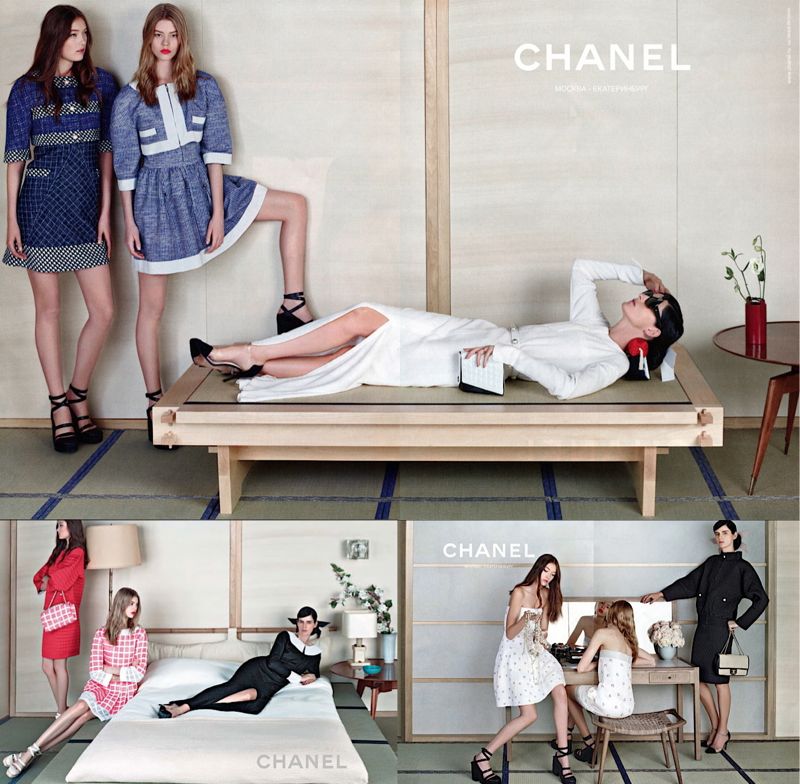 CHANEL’s Spring/Summer 2013 Campaign Photographed by Karl Lagerfeld
CHANEL’s Spring/Summer 2013 Campaign Photographed by Karl Lagerfeld
